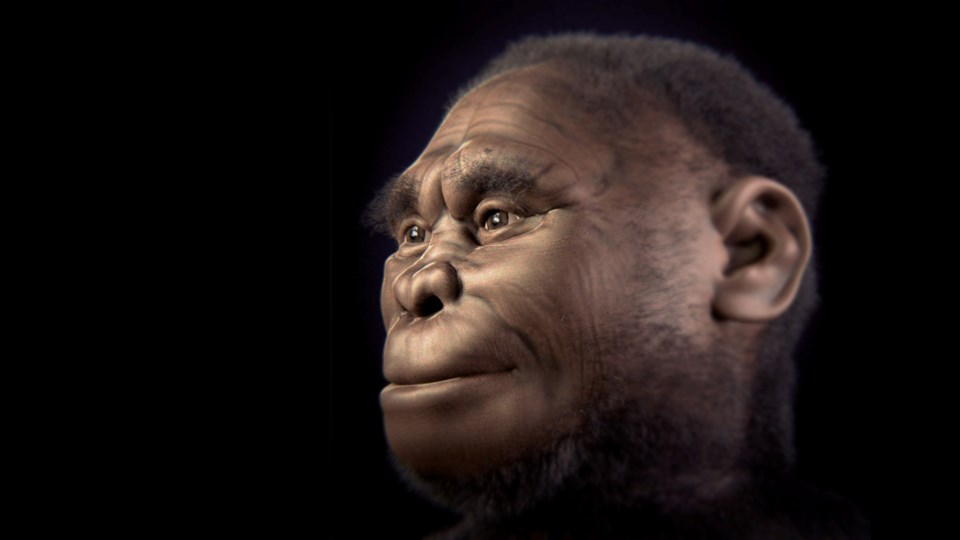Ever since several small skeletons of an early human species were excavated in Indonesia in 2003, we have known that creatures astonishingly like Tolkien’s fanciful, furry-toed characters once walked the Earth.
Standing erect at just over a metre in height, Homo floresiensis is believed to have appeared on the island of Flores before 100,000 years ago. Humans arrived there about 12,000 years ago.
And yet, well before the discovery of “the hobbit” — as floresiensis was soon nicknamed — occasional sightings of a similar hominoid were reported by the inhabitants of Flores and still are to this day.
So could hobbits be real?
That quandary is one of the reasons Gregory Forth has spent the past decade of his career observing how the island’s Lio people “organize their social and spiritual lives, what they believe and what they consider valid knowledge.”
The professor emeritus of anthropology calls his hunt for Flores’ mystery hominoid — known locally as the ape-man — an exercise in “cryptozoology,” the study of hidden or undiscovered animals. The ape-man has yet to be scientifically identified.
Earlier this year, Forth released his anthropological investigation, Between Ape and Human: An Anthropologist on the Trail of a Hidden Hominoid, his first book for a general audience.
Last April, he also wrote a controversial opinion piece in The Scientist claiming, “Another Species of Hominin May Still Be Alive.”
Forth first did fieldwork on Flores in 1984, after two years of doctoral research on the neighbouring island of Sumba. Fluent in the Indonesian national language of Bahasa Indonesia, he has since returned to the island 19 times, totalling about four years.
In the summer of 2003, he began fieldwork among the Lio people of eastern Flores, mainly cultivators and occasional hunters who also raise domestic animals. This was before Homo floresiensis was found in western Flores and more than a year before the discovery was made public in October 2004.
Forth heard reports of the ape-man almost upon his arrival, which were later corroborated by dozens of others. He was struck by the matter-of-fact, naturalistic and consistent nature of the reports, but also by the arresting similarity of their descriptions to Homo floresiensis.
The Lio claimed that ape-men (and ape-women) were alive in remote sections of their mountainous territory, describing them as walking upright on two legs, hairy-bodied and cultureless — living without tools, weapons, clothing and even fire, writes Forth.
“I never encountered anyone who thought the hominoids were imaginary,” he said.
“Having no stake in and little knowledge of modern biology or paleoanthropology, Lio would have no reason to doubt that a small bipedal hominoid combining features of humans and apes could exist in their territory.”
As Forth sees it, the Lio would also have no apparent reason to make up such sightings, with “no motive — financial, social or otherwise — either for finding an ape-man specimen or for hoaxing or making false claims.”
They were familiar with ape-men long before missionaries or other agents of colonialism showed up on the island, and long before the discovery of Homo floresiensis, says Forth. And there is nothing in the Lio’s secondary-school curricula on paleoanthropology or human evolution.
“Their indigenous cosmology contains nothing comparable to a view of present-day humans or animals having gradually evolved from physically different ancestors,” he writes.
What’s more, the Lio are largely insulated from external influences, including stories of Bigfoot (Sasquatch). All considered, Forth argues there is a reasonable chance the ape-men are anything but imaginary.
“There is reason to believe they could be present-day descendants of floresiensis, and if so it could mean that this species still shares Flores with modern humans.”
One possibility is that the ape-man descended from an ancestor of Homo floresiensis that reached Flores more than a million years ago.
Of course, the creature could also be a pure figment of the Lio imagination. Forth entertains all of these possibilities in his book.
“How can I be sure that anything I heard reflects a natural, zoological reality, or a creature corresponding to a scientifically unknown species?” he asks. “The short answer is that I can’t.”
For the most part, cryptozoologists don’t rely on scientific evidence, says Forth. Rather, they “construct their arguments for the existence of scientifically unrecognized animals based on statements by ordinary folk who claim to have seen one.
“At the same time, as an anthropologist I’m fully aware that verbal evidence of any kind can be fabricated, exaggerated or simply mistaken.”
Being retired, Forth has little interest in establishing definitively whether the Flores ape-man exists. He’s content to simply let the mystery be.
But he does appeal to readers of his book to at least give the Lio a fair hearing.
“If accepted as probable or plausible accounts of real creatures, what the Lio say about the hominoids presents a challenge to zoology and paleoanthropology,” he writes.
“If not, then a greater challenge falls to other disciplines concerned with human beings: to explain why the Lio subscribe to the existence of entities with little or no basis in observable reality.”
Article courtesy of University of Alberta folio



